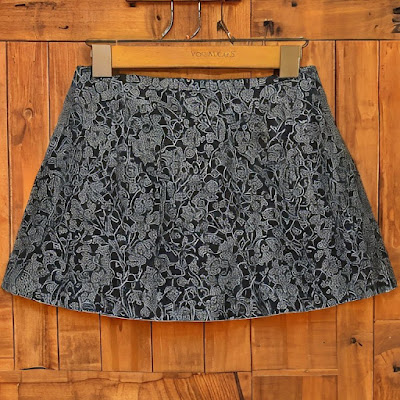![]() The mini skirt is a short skirt that became a fashion phenomenon in the 1960s. It is often attributed to the British fashion designer Mary Quant, who is widely recognized as its creator. The introduction of the mini skirt brought about a significant shift in fashion and cultural norms.
The mini skirt is a short skirt that became a fashion phenomenon in the 1960s. It is often attributed to the British fashion designer Mary Quant, who is widely recognized as its creator. The introduction of the mini skirt brought about a significant shift in fashion and cultural norms.
During the early 1960s, there was a general sense of social and cultural change. The post-World War II era brought newfound liberation and a desire to break free from traditional societal constraints. This atmosphere provided the perfect backdrop for a fashion revolution, and Mary Quant's mini skirt played a crucial role in challenging existing dress norms.
Mary Quant, along with her partner and husband Alexander Plunket Greene, opened a boutique named Bazaar on the King's Road in London in 1955. The boutique quickly gained popularity and became a hub for young and fashionable individuals seeking new and daring styles.
Quant was inspired by the energy and vitality of the younger generation, and she aimed to design clothes that reflected their attitudes and desires. She felt that the fashion of the time was outdated and restrictive, particularly for women. She wanted to create something fresh, liberating, and accessible.
In the mid-1960s, Quant began experimenting with shorter hemlines. She had already been designing and selling short, A-line dresses, but she decided to take it a step further. In 1964, she introduced the mini skirt, which was essentially an ultra-short skirt that ended several inches above the knee.
The mini skirt quickly gained attention and caused a sensation. It was a stark departure from the prevailing fashion, which emphasized longer hemlines and a more conservative approach. The mini skirt symbolized youth, rebellion, and a rejection of traditional values.
Quant's mini skirt captured the spirit of the Swinging Sixties in London, a period of cultural revolution and artistic experimentation. It became a symbol of women's liberation and sexual freedom. The mini skirt was embraced by young women who wanted to express themselves, challenge societal norms, and enjoy greater mobility.
The popularity of the mini skirt spread beyond London and across the globe. It became synonymous with the mod fashion movement, which emphasized bold, colorful designs and youthful aesthetics. Pop culture icons such as Twiggy, a British model and actress, helped popularize the mini skirt and made it an iconic symbol of the era.
The introduction of the mini skirt sparked debates and controversies. Some viewed it as a symbol of female empowerment and progress, while others criticized it as indecent or inappropriate. Nevertheless, the mini skirt had a profound and lasting impact on fashion, challenging long-standing conventions and paving the way for more daring and experimental styles.
Today, the mini skirt remains a staple in fashion, constantly reinvented and reimagined by designers. Its origins in the 1960s continue to resonate, representing a pivotal moment in fashion history and the ongoing pursuit of self-expression and freedom. Mary Quant's innovative creation continues to inspire and influence designers and fashion enthusiasts around the world.
Source: Some or all of the content was generated using an AI language model


No comments:
Post a Comment